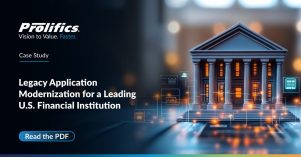Client:
Our client, a global leader in the oil and gas industry (OGC), operating across 80 countries, plays a vital role in supplying fuel, energy, retail services, and petrochemical products.
Challenge:
The oil and gas industry embraces advanced technologies like AI, IoT, Big Data, and cloud computing. The emergence of ‘Digital Twins’ offers unparalleled insights into operations—a dynamic, virtual representation of physical assets or systems created using real-time data. Despite recognizing its potential, OGC faces challenges in bridging the gap between digital replicas and reality due to complex manual data processing.
In the ideal scenario, OGC envisions capturing facilities using a high-resolution 3D system and importing them into a comprehensive application platform as the ultimate single source of truth. However, manual processes hinder reaching this state, involving navigating through various source documents and applications, making the alignment of digital information a challenge.
Action:
Enter the autonomous pipeline—a system developed by Prolifics using AI to automate manual activities. While full autonomy is a long-term goal, the current approach involves leveraging AI to autonomously perform most process steps, reducing reliance on extensive human resources, expediting reconciliation, and paving the way for future enhancements.
Prolifics actively engages in:
- Proof-of-Concept (POC): Utilizing AI accelerators as reconciliation tools for visual digital twins.
- Incremental Feature Development: Enhancing AI tools for specific requirements within OGC’s operations.
- Limited Iterations: Testing and refining in two phases, focusing on specific facilities and a restricted scope of assets.
- Scaling Efforts: Aiming to extend autonomous efforts across all OGC’s assets and digital sources.
- Comprehensive Support: Providing assistance in data integration, real-time connectivity, user training, scalability planning, and cybersecurity.
Results:
The tangible results include immediate hard savings in time and money, empowering better planning, improved worker experiences, precise simulations, enhanced failure predictions, and more efficient cost reduction. Achieving a single source of truth aligns with OGC’s sustainability goals, enabling efficient facility planning and anticipation through simulation. The technology’s versatility contributes to unlocking various use cases, potentially saving hundreds of millions of dollars for OGC.




